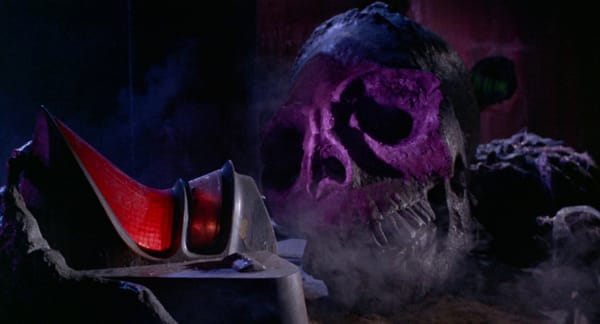They've been disrespecting dinosaurs for 175 years
They can't keep getting away with this!!!
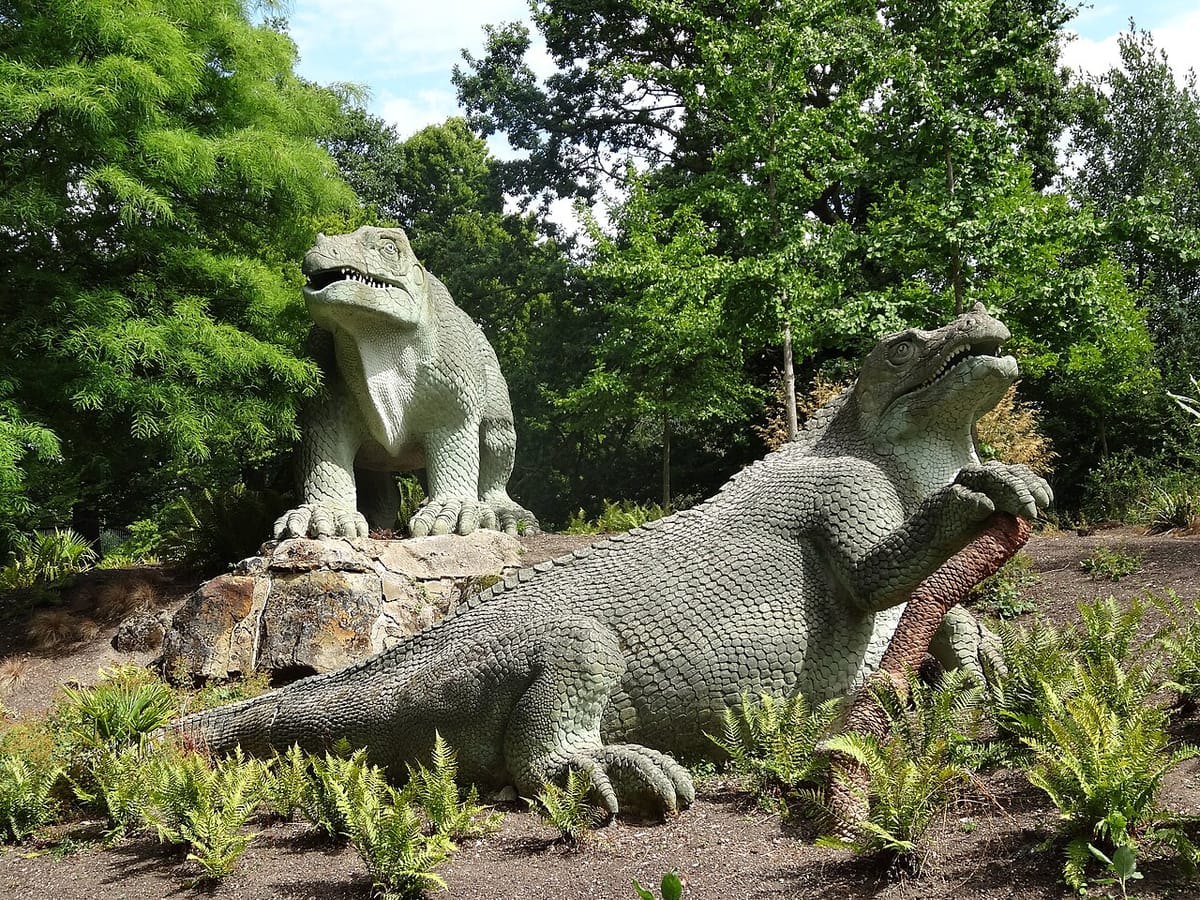
The ‘invention’ of the dinosaur in the 1850s
Among the most eccentric of London’s tourist attractions are the Crystal Palace Dinosaurs. A series of 19th Century sculptures of ‘dinosaurs’, these figures populate a park in Bromley, the site of the ‘Crystal Palace’ after the closure of the Great Exhibition in 18511. Conceptualised by pioneering paleontologist, Richard Owen (who coined the word ‘dinosaur’), the popularity of the scultures has endured in no small part due to one factor in particular: they’re hilariously inaccurate. Every year, people flock to the site to see the iguanadon with its thumb-spike in the wrong place or the hadrosaur on all-fours instead of its hind legs. Starting their life as a record of prehistoric majesty, the Crystal Palace Dinosaurs have become a monument to historic ignorance.
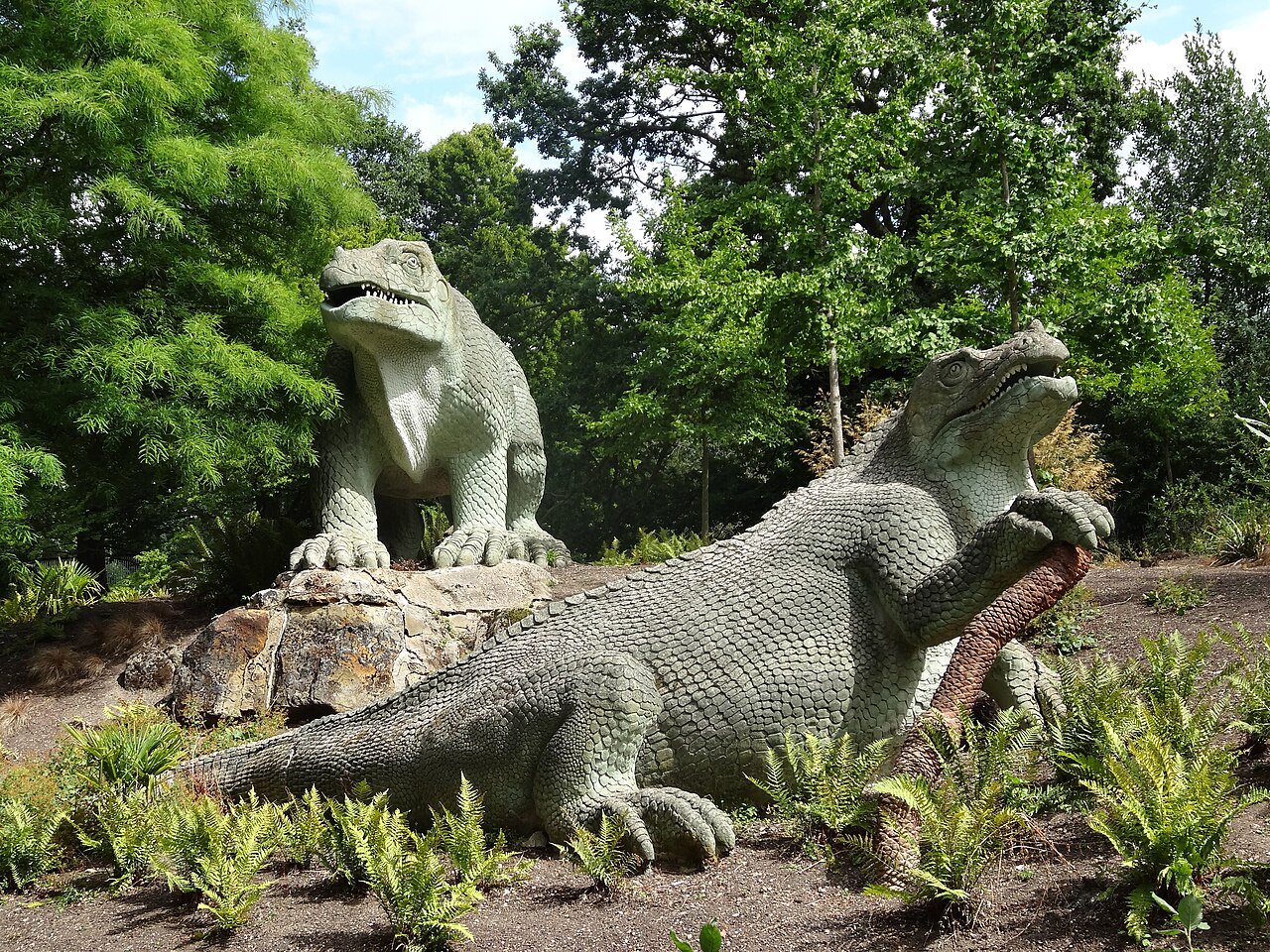
When I say ‘one for them, one for me’, I mean that articles like this are based on my own weird fixations. If you become a paid subscriber, I may start writing more articles for you specifically.
In his article, A Site for Saur Eyes, Dan Smith talks about the legacy of these sculptures:
The vast crowds that visited the palace, as well as generating enormous amounts of publicity, ensured the proliferation of the dinosaur as a popular image. Yet these popular images have been made obsolete; the knowledge and imagery surrounding prehistoric life are continually updated at an impossibly accelerated pace, from clumsy, industrial monsters to postmodern, sleek and bird-like computer-generated animals.
If you consider the pop culture of the decades following Owen’s dinosaurs, you can see their lingering influence even after the science had moved on. In Fritz Lang’s 1924 silent epic, Die Nibelungen: Siegfried, the protagonist faces off against a dragon that looks less like the winged creatures from European folklore and more like one of the sprawling scultures. The same can be said of dinosaurs in films like 1925’s The Lost World and 1933’s King Kong. In 2019, Gamefreak even paid tribute to these dinosaurs in its UK-inspired Pokémon Sword and Shield. From the first games in the 1990s, Pokémon has included creatures that can be obtained by resurrecting fossils2 but these ones included a British twist: you combine two mismatched fossils to create paleontological abominations.
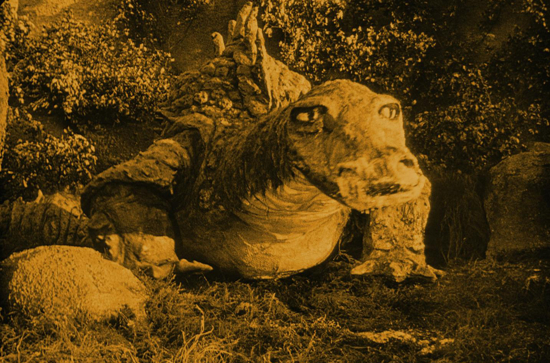
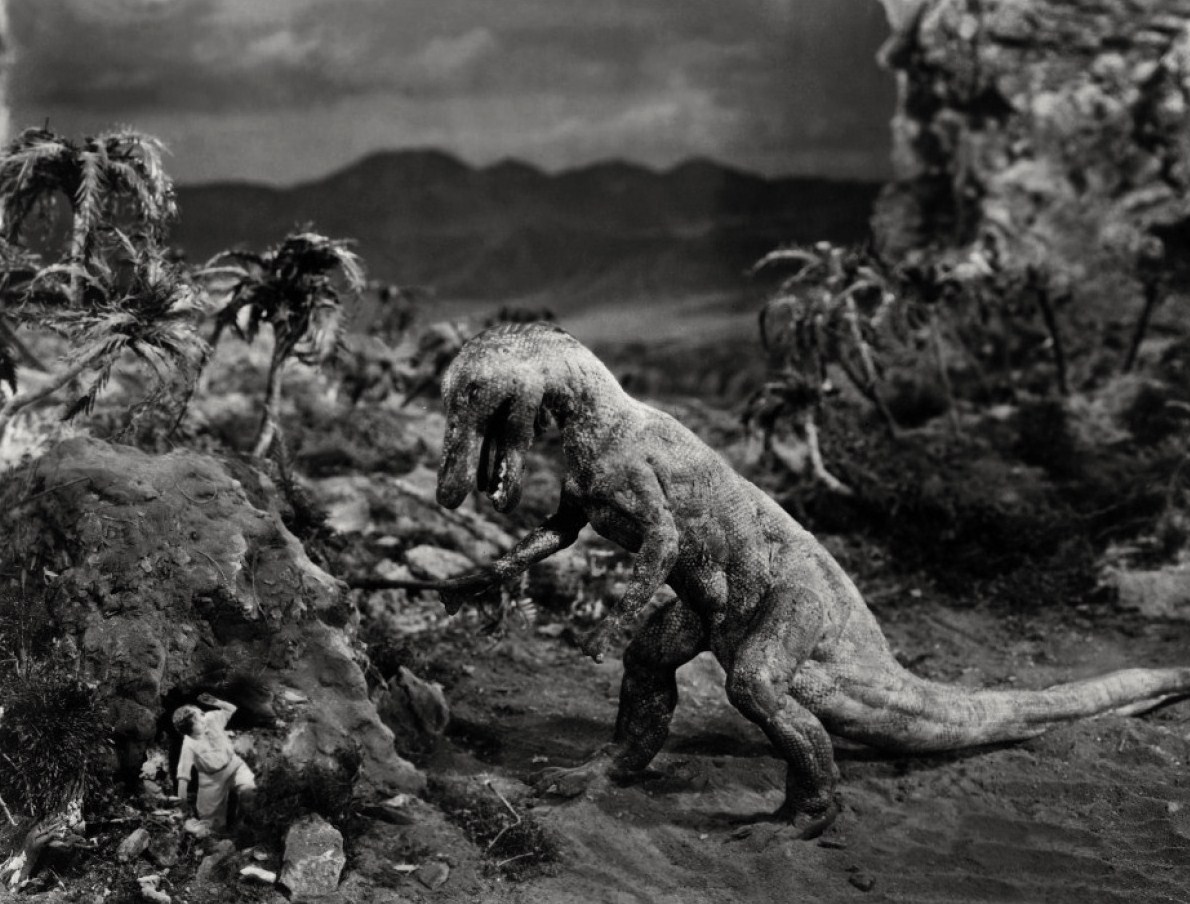
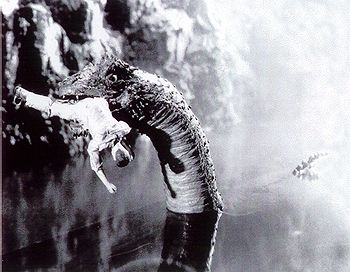

With the benefit of hindsight, it’s easy for us to mock Victorian dumbasses who didn’t even know what a dinosaur looked like, but are we really any better?
The ‘invention’ of the dinosaur in the 1990s
The now-accepted theory that birds are the descendents of dinosaurs was first proposed by Thomas Henry Huxley in the 1860s, just a few years after both the Crystal Palace Dinosaurs and the publication of Charles Darwin’s On the Origin of Species. This idea was built-upon a century later during the so-called ‘Dinosaur Renaissance’ starting in the 1960s. By the 1990s, everyone (including me as a pre-schooler) knew that most dinosaurs had feathers. Steven Spielberg, however, decided to ruin it for everyone.
If the idea of the dinosaur in early cinema was indebted to the Crystal Palace sculptures, the idea of the dinosaur to this day is completely inseperable from that established in Jurassic Park. Even in 1993, Spielberg knew that his dinosaurs shouldn’t have had scales. However, he decided to build on an idea from Michael Crichton’s source material in which the dinosaurs were resurrected by combining the prehistoric DNA with that from creatures like frogs.
If the in-world explanation for featherless dinosaurs is that they contain genetic material from featherless creatures,3 the practical reason is likely that they are difficult to animate. I have to begrudgingly hand it to Spielberg for the fact that his early-CGI holds up to this day, largely due to the fact that he decided not to animate a bunch of feathers. It is still difficult to make CGI fur and feathers look good onscreen (in case anyone was wondering why the baboons in Gladiator 2 were shaven).
However, more than three decades after Jurassic Park, ‘the dinosaur’ as it exists in our popular imagination is as naked as it was when it was invented by Richard Owen.4 London’s Natural History Museum brands itself as having ‘world-class expertise’ but its dinosaur scuptures are hardly more accurate than their ignominious cousins in Bromley. The idea that this exhibition represents are more enlightened perspective than the Crystal Palace is a great example of the historical chauvinism that one should expect from museums in London.
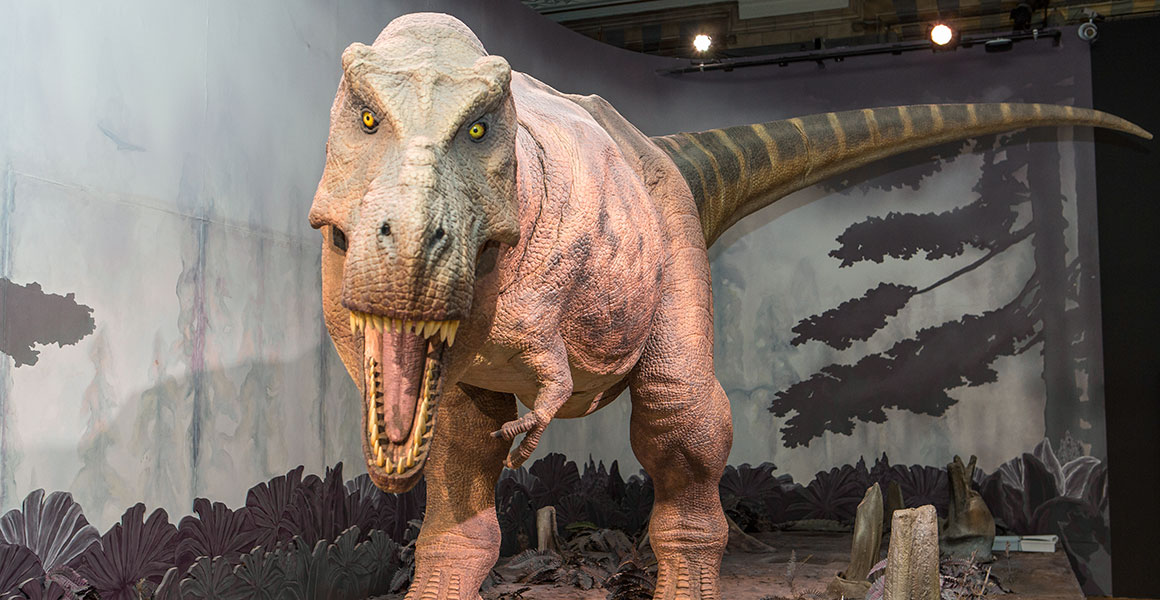
Can the dinosaur be invented again?
Believe it or not, I’m not the only person who cares about feathered dinosaurs. Since Spielberg’s first foray into the Mesozoic, paleontologists have been pushing for better representation. Robert Bakker served as a consultant on Jurassic Park and has long been a voice of reason. He said in 2016 “That’s something we're all waiting for—a Jurassic Park where there’s no more naked dinosaurs.” And there are others who agree, like the fans who have been adding feathers into the original film.5
And things are slowly improving. I was inspired to write this piece when I visited the Australian Museum in Sydney and was pleasantly surprised with its accurate dinosaur exhibition. The imperial core might be resisting the pull of science and history but its former colonies are doing a bit better.
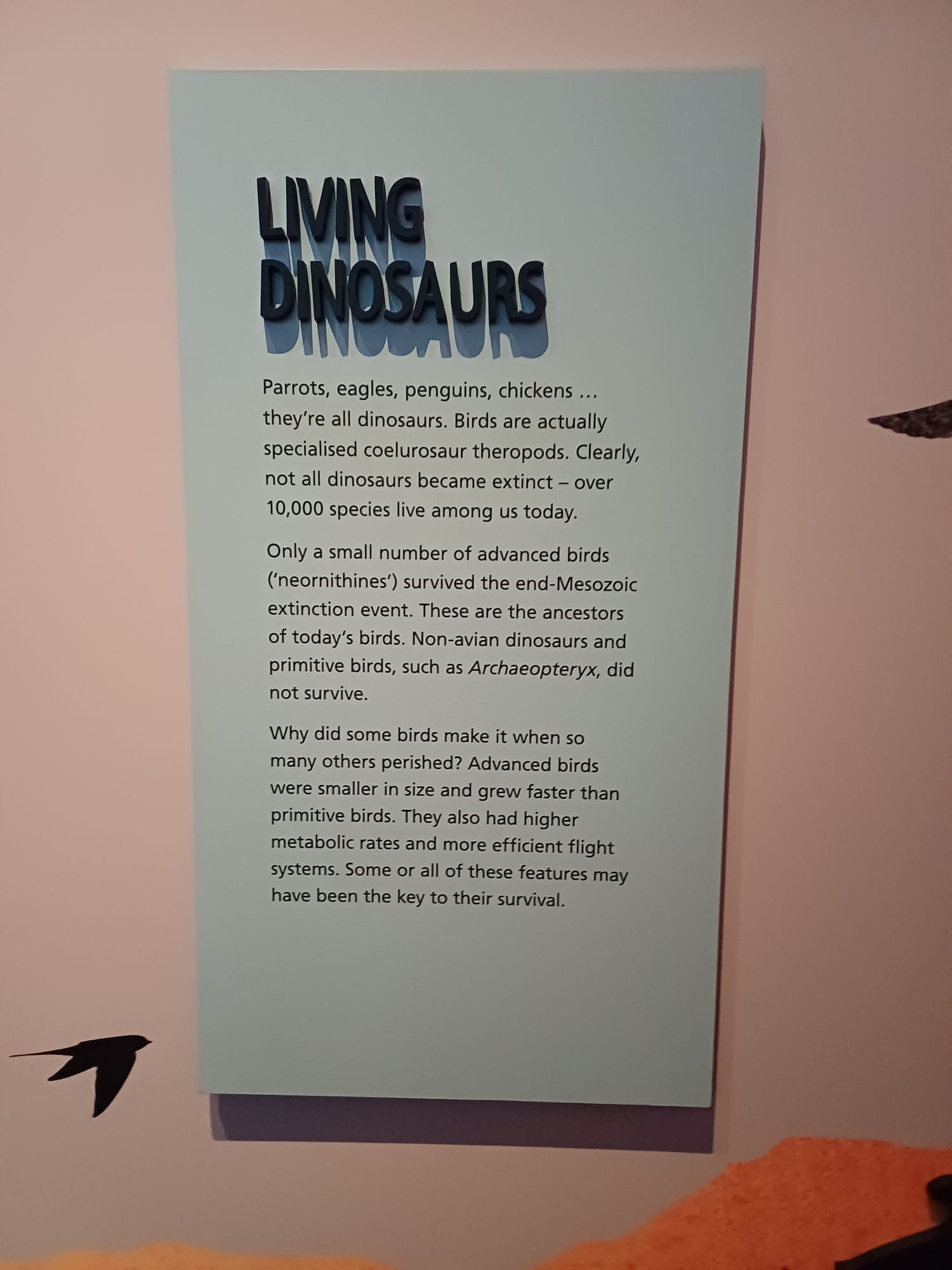

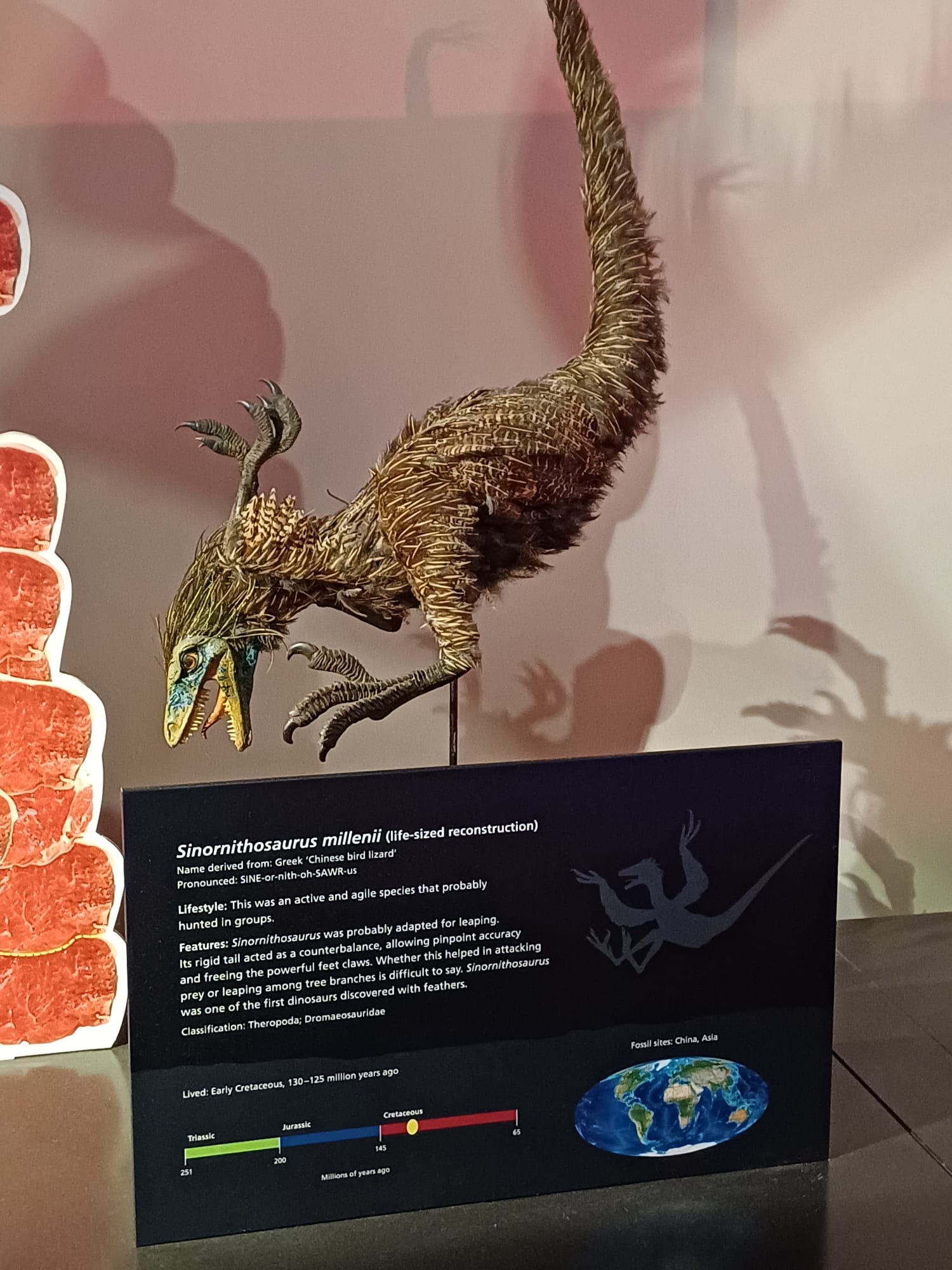
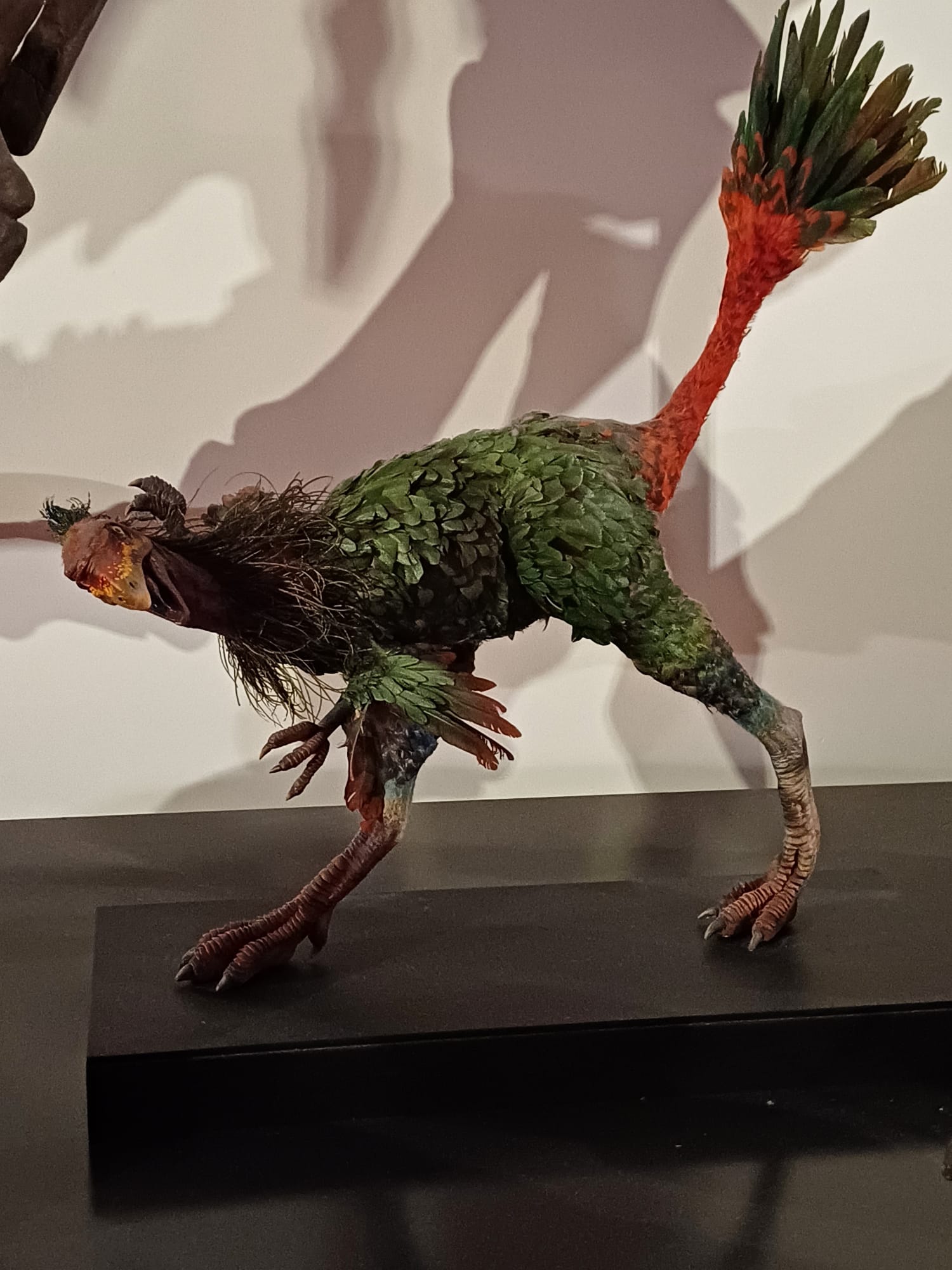
My passion for feathered dinosaurs comes primarily from my love of birds. It’s impossible to take modern dinosaurs like the takahē, the cassowary or the hornbill and pretend that they’d be cooler without feathers. If you search Reddit, you’ll find no shortage of nerds who can’t let go of the idea of scaly dinosaurs because they want continuity with the 1993 film or just think they look cooler. It is my firmly-held view that each of these people is a baby-brained moron who should be ridiculed for their opinions.
Of course, as expressed by Dan Smith, the popular image endures even as science moves on. Scientists knew the Crystal Palace Dinosaurs were inaccurate when King Kong came out just as they knew dinosaurs had feathers when Jurassic Park was released. In both cases, the artists deferred to the popular image. The problem is less that it takes popular culture a while to catch up, it’s that feathered dinosaurs are cool as hell and to deny this fact is to reinforce anti-bird propaganda.
a fantastic essay on the Crystal Palace can be found in Una Cruickshank’s The Cthonic Cycle ↩
itself a reference to Jurassic Park which came out a couple of years before the first Pokémon games ↩
I would be remiss if I didn’t mention that Spielberg already had a track-record of putting naked abominations onscreen. A decade earlier, he had disgusted audiences with a nasty little guy who would haunt the nightmares of children like me for years to come. It is unclear whether ET’s unholy genome contained any amphibian DNA but it’s hard to imagine how a loving God could have allowed such a disgraceful creature to insult His creation with its ongoing existence. If Spielberg was merciful, he would have taken ET out back and sent him to whatever afterlife is equipped to deal with his repulsive visage. ↩
Apparently there are feathered dinosaurs in 2022’s Jurassic World Dominion but I haven’t been able to verify this as I am yet to meet anybody who has seen it ↩
Shoutout to friend of the Substack Pascal for introducing me to this ↩


